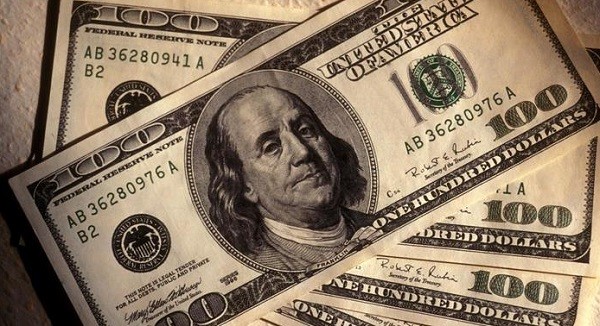Benjamin Franklin, a figure synonymous with American ingenuity and independence, is prominently featured on the United States $100 bill. This might raise the question: why is a Founding Father, who was never a president, honored on such a high denomination banknote? The answer lies in Franklin’s monumental contributions to the birth of the nation and his multifaceted brilliance that extended far beyond politics.
 Benjamin Franklin portrait on the United States one hundred dollar bill, a tribute to his pivotal role as a Founding Father and his lasting impact on American history.
Benjamin Franklin portrait on the United States one hundred dollar bill, a tribute to his pivotal role as a Founding Father and his lasting impact on American history.
While U.S. currency predominantly features presidents, Benjamin Franklin stands out as one of only two non-presidents on the face of American banknotes, the other being Alexander Hamilton on the $10 bill. Hamilton’s presence is attributed to his foundational role as the first Secretary of the Treasury, architecting the U.S. economic system. Soon, Harriet Tubman, a celebrated abolitionist, will join this distinguished group on the $20 bill, further diversifying the figures represented on American money. However, Franklin’s placement on the $100 bill, the highest denomination in common circulation, underscores his exceptional significance.
Franklin’s importance stems from his pivotal role as a Founding Father. He was not just any participant; he was arguably the most influential among them. His age and extensive experience lent considerable weight to his opinions and actions during the tumultuous period of American independence. Crucially, Franklin was instrumental in securing international support for the fledgling nation. He masterminded the Treaty of Alliance with France, persuading the French to back the American cause against Great Britain, a move that proved critical to the success of the Revolution. Furthermore, he skillfully negotiated loans and trade agreements with various European powers, bolstering the American economy in its infancy.
Adding to his unparalleled resume, Benjamin Franklin is the only Founding Father to have signed all three landmark documents that paved the way for American independence: the Treaty of Alliance with France, the Treaty of Paris (which formally ended the Revolutionary War), and the Declaration of Independence. He was also a signatory of the U.S. Constitution, solidifying his commitment to the very foundation of American governance. Beyond his political achievements, Franklin was a celebrated entrepreneur, establishing himself as a successful printer and publisher. His insatiable curiosity also led him to significant scientific discoveries, earning him international recognition as a prominent scientist of the 18th century. In fact, Benjamin Franklin was arguably the most famous American in Europe during that era, enhancing America’s standing on the world stage.
The decision by the U.S. Department of the Treasury to feature Benjamin Franklin on the $100 bill was a deliberate acknowledgment of his multifaceted contributions and enduring legacy. The Secretary of the Treasury, in making this decision, considered Franklin’s profound impact on American history and the desire to represent a broader spectrum of influential figures on U.S. currency. This choice, informed by historians, scholars, and public input, cemented Benjamin Franklin’s place as a central figure in the American narrative, worthy of the honor of adorning the nation’s highest value banknote.